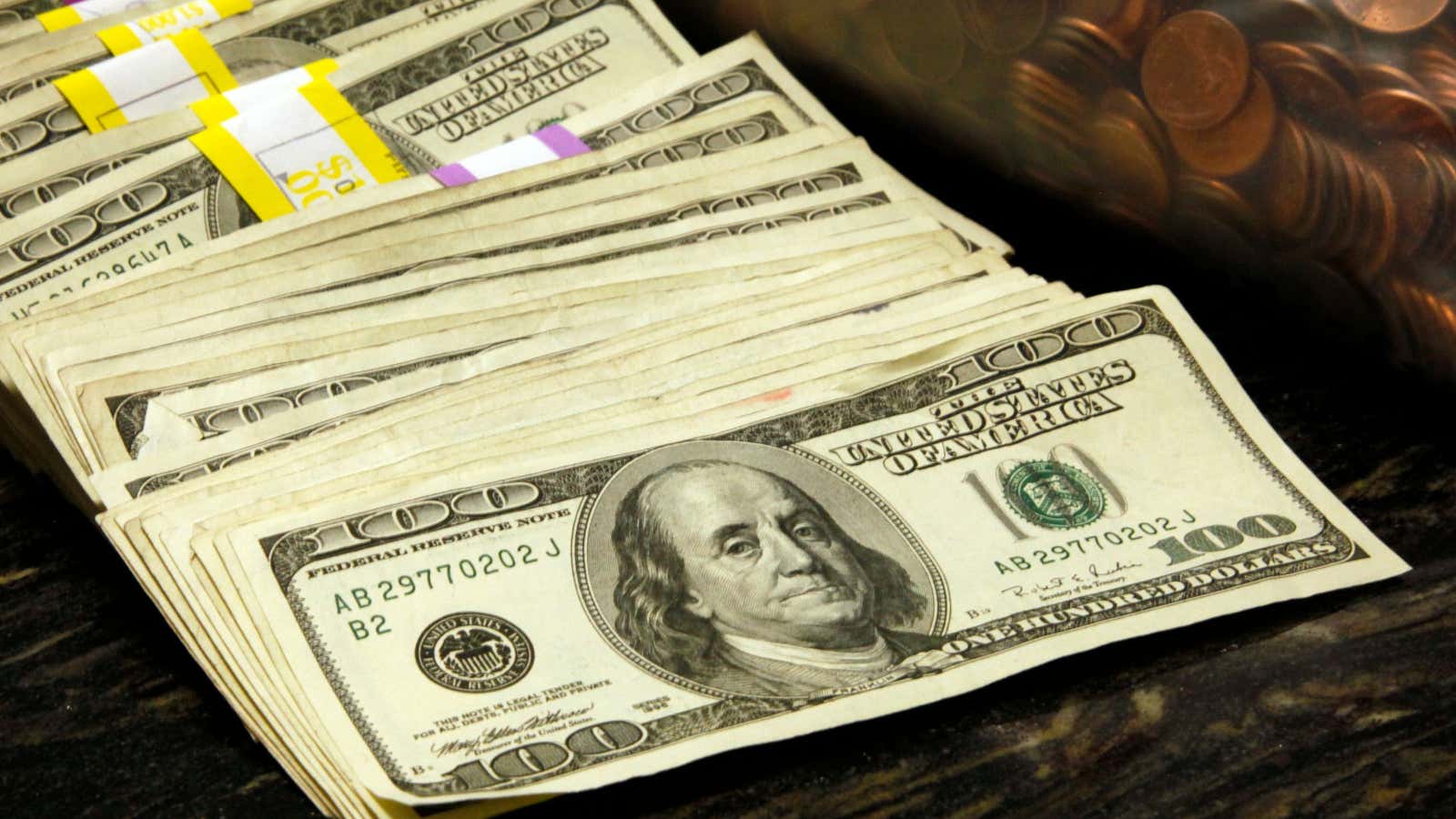Money doesn’t grow on trees. And it doesn’t grow in savings accounts at big brick-and-mortar banks like Chase, Wells Fargo, and Bank of America either. Today the average interest rate across all US-based savings accounts is a paltry 0.09%. Yet, a few clicks away you can find rates that are 20 times higher and requiring no additional risk. How is this even possible?
Meet the high-yield savings account
If a bank has tellers and physical locations, it’s got a ton of overhead expenses. (JPMorgan Chase alone has a quarter-million employees.) These costs then get passed along to you, the consumer (i.e. saver), in the form of lower interest rates.
Enter a new crop of bank accounts that are “online only.” They include accounts from Ally Bank, American Express, and Marcus, the online consumer bank started by Goldman Sachs. With no physical branches and limited overhead, they are able to pass along the cost savings to you, the saver, in many instances offering rates currently in excess of 2%. For a full list of updated rates, visit Bankrate.com. Here’s a sampling of annual percentage yields (APY) for January 2019. Note the comparatively tiny rates on traditional savings accounts from big US banks like Chase and Bank of America.
So what’s the catch?
Unless you enjoy the thrill of interacting with bank tellers, there is none.
The idea of starting or switching over a bank account might sound daunting. But in a world of digital transactions, the friction of setting up new digital accounts is de minimis (just make sure that your digital security is bulletproof). Most of these accounts don’t have minimum balances and many offer rebates on ATM withdrawals.
Isn’t a no-name bank more risky?
Nope, not in the United States anyway. Meet your friend, the Federal Deposit Insurance Corp (FDIC). Without getting into the technicalities, what you need to know is that the US government insures all bank deposits up to $250,000. And if you have more than $250k burning a hole in your pocket, you can spread it across different banks to increase your protection. This means that even if your bank goes under, the US government (so long as it, too, were solvent) would protect your deposit. So whether you pick Citibank, Citizens, or Symphony, it’s all the same amount of risk.
But read the fine print
A general rule of thumb for financial products is: “If it’s too good to be true, it probably is.”
Consider the fintech startup Robinhood, which recently announced the offering of 3% checking and savings account. The fine print on their announcement revealed that the accounts would not be FDIC-insured, but insured instead by a nonprofit, member-funded corporation called the Securities Investor Protection Company (SIPC). Only SIPC, which mainly exists to protect money put into stocks and bonds through brokerage accounts, came out the next day and said it wouldn’t be insuring the Robinhood accounts either, and Robinhood ended up tabling the launch of the new service and needing to regroup.
Even if SIPC had agreed to cover the accounts, the protection would not offer the same reliability as insurance backed by the full faith and credit of the US government. If you’re looking for the highest level of insurance for your savings account, there’s only one four letter acronym that matters: FDIC.
Should I just dump all my money into these?
Not so fast. While they are wonderful savings vehicles, it’s important to remember that these are daily rates and they will fluctuate. While the rates tend to move alongside the US government bond yield curve, online banks will often bump up rates to acquire new customers, only to lower them at a later date. Some of the “incumbents” (Ally, Amex, Barclays, and Capital One) tend to stay close to the top of the list of accounts with the biggest interest rates, but if you want to truly mix and match, you’ll have to be vigilant and monitor the rates using a comparison tool like Bankrate’s.
Then don’t forget taxes. Interest income in the US is taxed as ordinary income (i.e. the same rate as your wages) which pits it unfavorably against capital gains or dividend taxes. These tax differentials compound meaningfully over the long term.
And finally, there’s inflation. Evaluating a savings rate in isolation overlooks the fact that these rates are part of an interconnected system of inflation, the health of the economy, Fed policy, and a bajillion other variables. If the rate of inflation exceeds your saving account’s interest rate (which is typically the case) you’ve actually lost purchasing power.
A diversified portfolio should have assets that can outpace the rate of inflation, such as (but not limited to) stocks, real estate, and commodities. A high-yield savings account is one tool in the toolkit and, at a minimum, a reasonable place to park your emergency fund.
